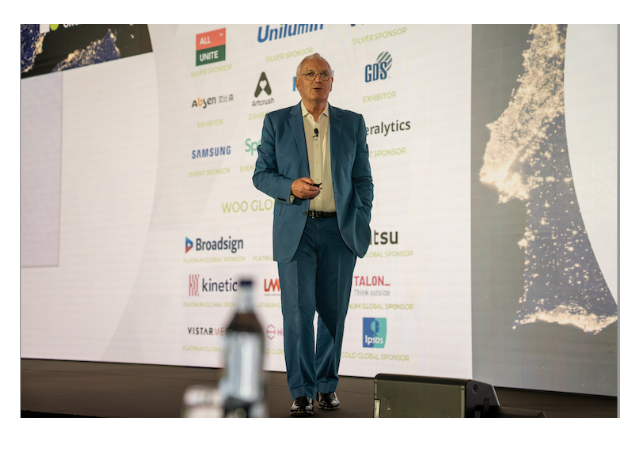World Out of Home Organization President Tom Goddard: why five per cent is no solution as Out of Home media rebuilds momentum
The global Out of Home industry has recovered the ground lost in the pandemic, President Tom Goddard told the World Out of Home Organization’s Global Congress this week, but the industry needed to raise its focus from maintaining global share at around five per cent to increasing to ten by 2030 through incremental one per cent annual increases.
More than 500 delegates gathered in Lisbon to hear that the keys to driving growth in OOH were:
Reducing the number of sales points/media owners, through greater consolidation. Countries with fewer such sales points enjoyed higher than average market share;
Curbing AdTech proliferation which needless complicates factors like automation with too many middlemen in the process of buying and selling;
Creating common standards and language to amplify and describe the benefits of OOH;
Dramatically improving uneven audience measurement around the world. Those countries with better audience measurement, preferably entrusted to Joint Industry Committees (JICS) enjoy bigger shares of the media market through trust and transparency.
Goddard, who has headed WOO and its predecessor FEPE International for six years, also announced his intention to step down after a further year in line with WOO’s progressive board rotation policy. Goddard was instrumental in the transformation of 60-year old trade body FEPE into WOO and its growth to 200 corporate members including 27 national trade association members, from zero six years ago.
On global market share for OOH Goddard said: “So now let’s look again at that 5% flat-lining share I hate so much. I call it “The 5% Syndrome.
“Why is it, with all the investment we’re making in digital screen conversions, in AdTech, and in high calibre executive hires, we are not gaining share. Some of you might rightly point out that other legacy media channels, especially print, have lost huge chunks of share to online, whilst OOH has held its position quite well.
“That’s true but on my travels around the world, when I look at the impact of our channel, everywhere, I can’t help feeling we’re worth much more than 5%.”
This point was underlined by many other speakers at Congress who also examined moves in sustainability, audience measurement, legislation, technology and diversity and inclusion.
A highlight of Day One, and unexpected on the part of delegates, was a guest appearance from Victor Ivanchenco from Prime in the Ukraine, wrapped in the Ukraine flag which he presented to Goddard.
Ivanchenco described the horrors of the Russian invasion including the dramatic effort it had on business. Then, he said, The OOH industry, found within itself, the capacity to be stronger, smarter and more courageous – the very same qualities the Ukrainian people had shown in resisting the invasion.
He received a spontaneous standing ovation.
Elsewhere Members of WOO’s new Sustainability Task Force, under blow UP Media CEO Katrin Robertson appeared on a special panel to outline their plan to create a practical tool kit for OOH companies of all sizes to improve their environmental performance.
Other panels included a review of programmatic and omni-channel selling and the need to make buying OOH easier across all sides of the industry: media owners, intermediaries and agencies.
But he resilience of Ukraine will be a highlight and the lasting memory for many delegates.


